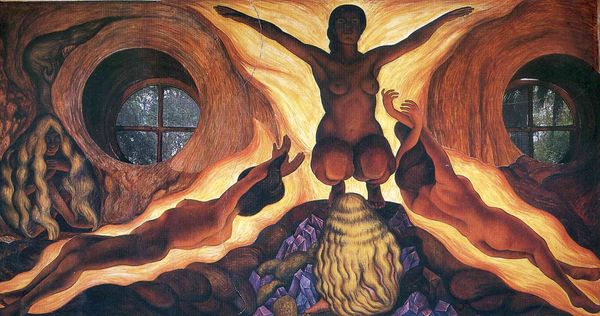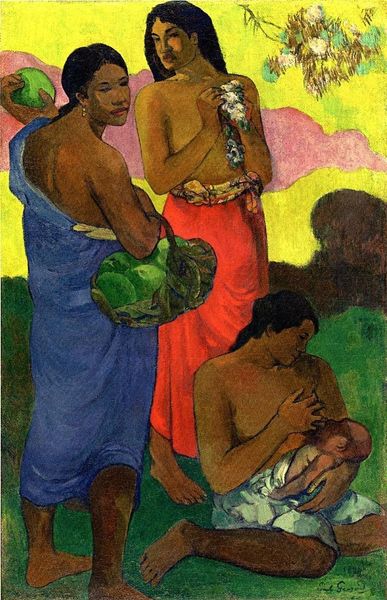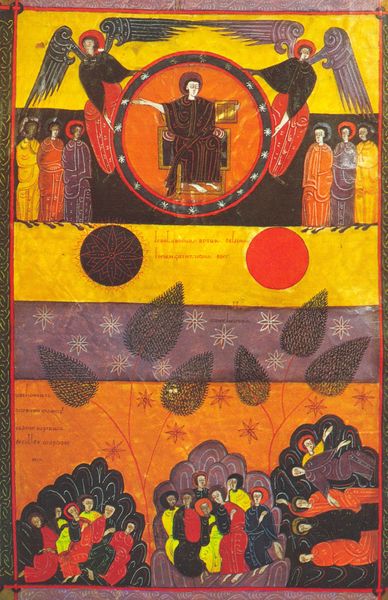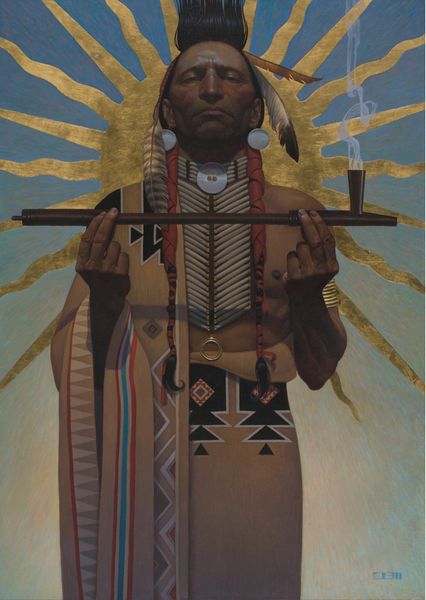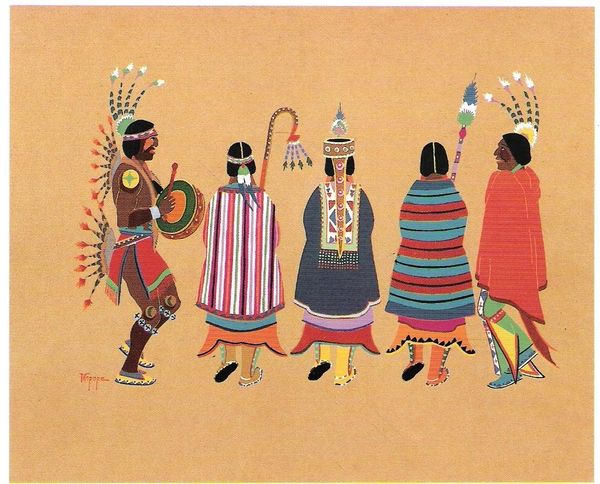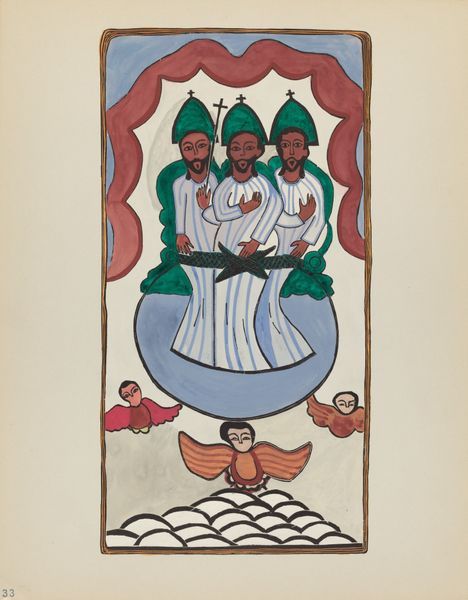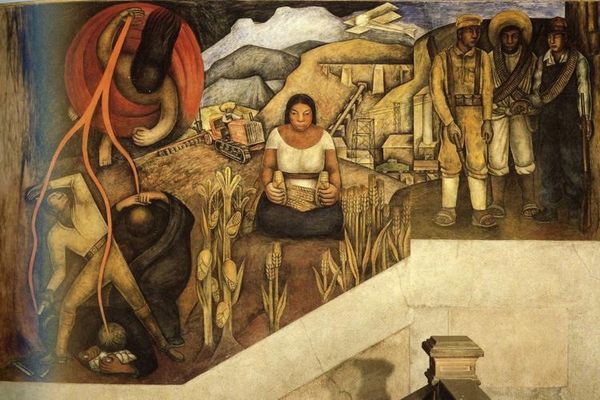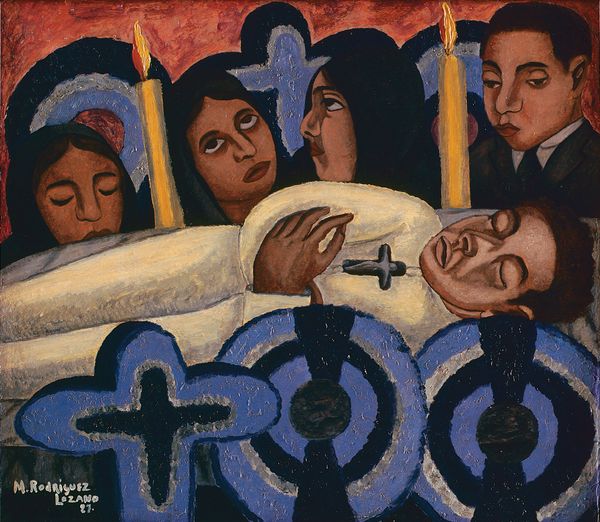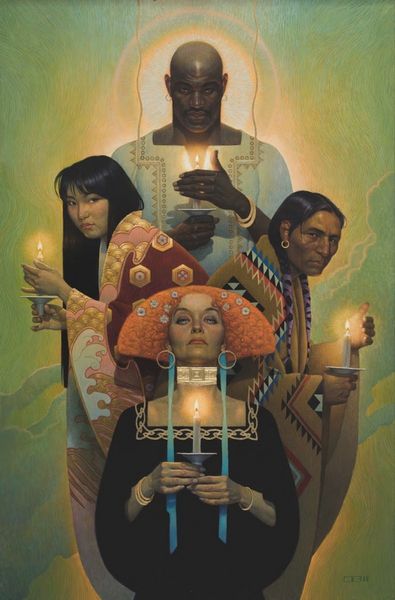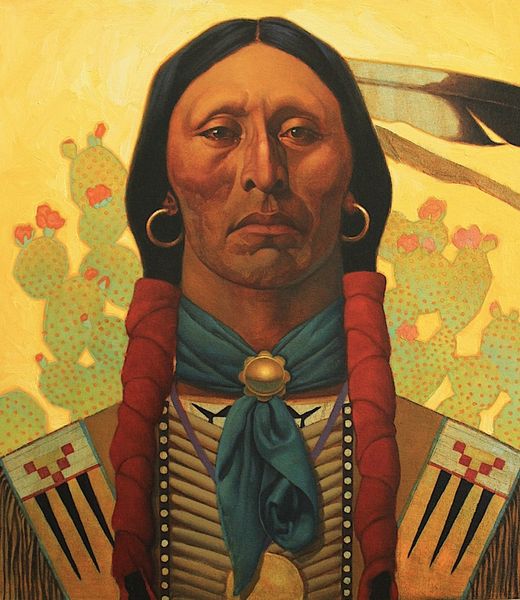
painting, oil-paint
#
painting
#
oil-paint
#
oil painting
#
painting art
#
genre-painting
Dimensions: 147.3 x 120.7 cm
Copyright: Diego Rivera,Fair Use
Curator: Diego Rivera’s "Flower Festival," painted in 1925 and now hanging at LACMA, presents a striking image of labor and commerce. Editor: There's a stillness to it, almost reverential. The earth tones lend a grounded feeling, but the profusion of white lilies almost pushes into the space, demanding attention. Curator: The composition employs a distinct flattening of space characteristic of much muralist work. See how the figures are arranged almost in tiers, the calla lilies acting as a kind of backdrop for the central figure and her assistants? Rivera uses color sparingly, strategically. Editor: Rivera was definitely interested in how manual labor shapes identity. Look at the hands of the central figure; they’re clasped, conveying a sense of quiet dignity but also hinting at a life spent working. We should consider the physicality involved—harvesting, bundling, and transporting these massive loads of flowers to market. Curator: Indeed. We can dissect Rivera’s employment of the indigenous subject through semiotics of labor, unveiling social hierarchies in Rivera’s aesthetic choices. The white lilies, juxtaposed against darker skin tones, play upon a dichotomy that invites careful consideration. Editor: But the very act of depicting these vendors elevates their status, doesn't it? The mural style, with its origins in public art meant for the masses, inherently imbues a sense of importance to the daily lives and work of indigenous communities. It's more than mere symbolism, it's about revaluing indigenous labor. And remember, Rivera’s commitment to Mexican identity was complex, informed by his travels and political leanings. Curator: While appreciating the social context, let's also note the technical brilliance of Rivera’s compositional structure, echoing pre-Columbian aesthetics. This infuses the subjects with symbolic weight and profound structural complexity. Editor: Precisely, making “Flower Festival” a dialogue on art, labor, and material conditions that resonates across time. Curator: An essential analysis for anyone interested in a nuanced reading of early 20th century Mexican art. Editor: It offers insights into the tangible realities shaping the cultural landscape and the artwork born from it.
Comments
No comments
Be the first to comment and join the conversation on the ultimate creative platform.
